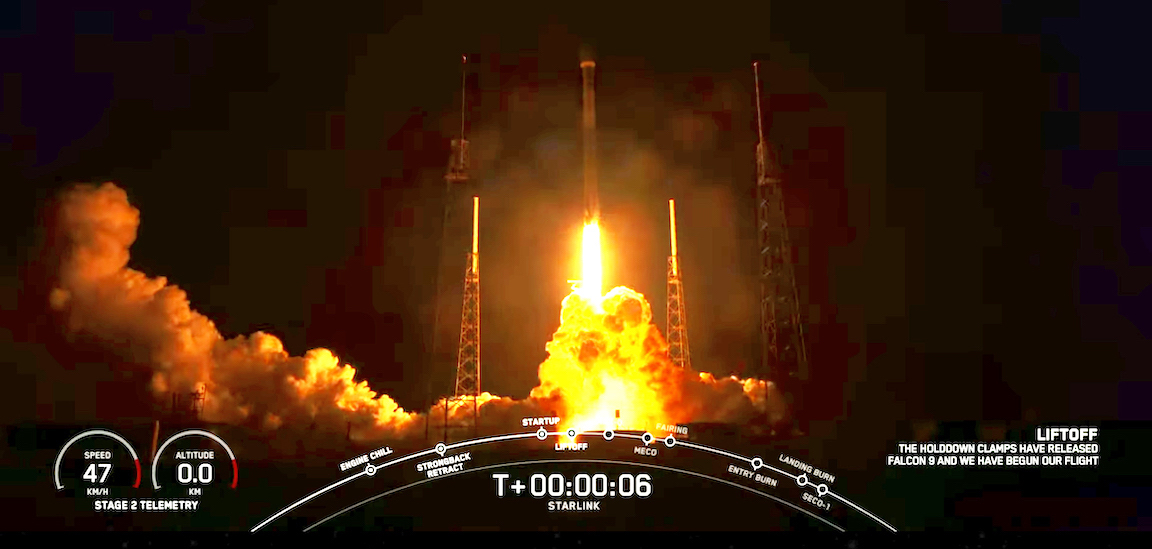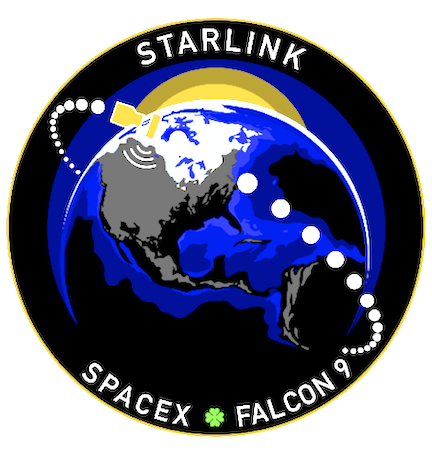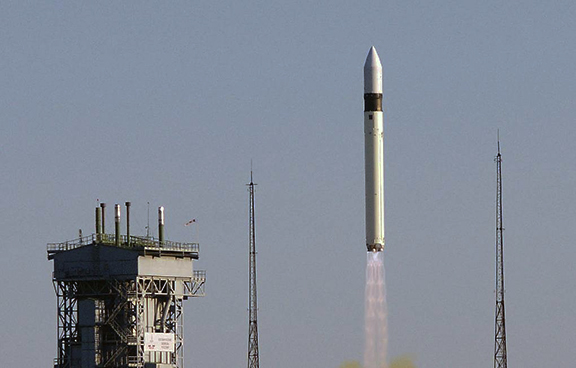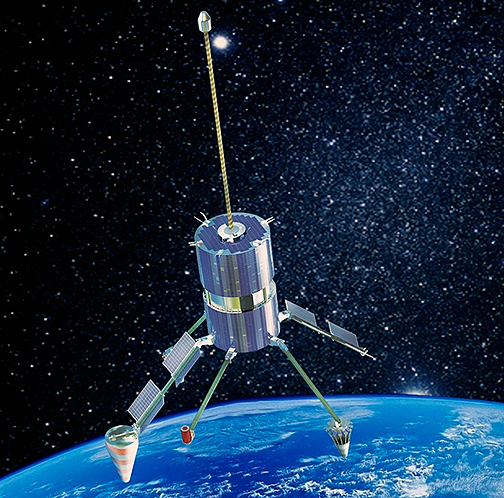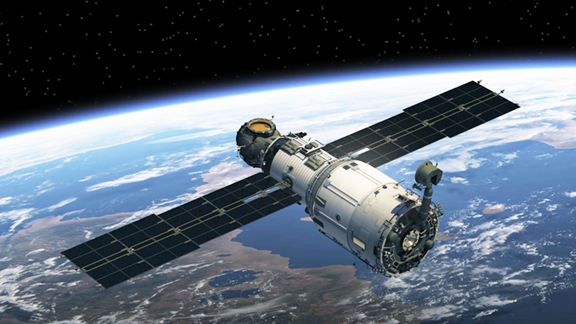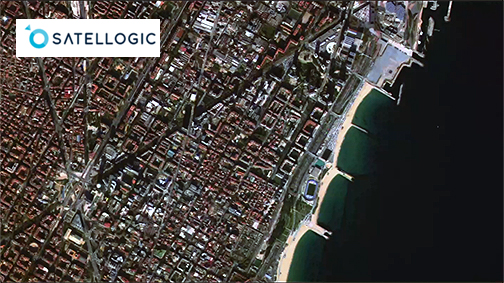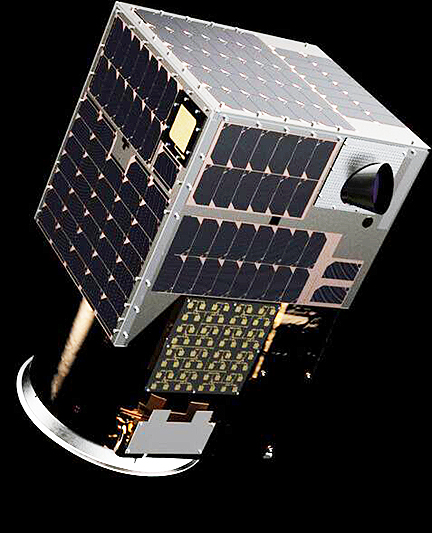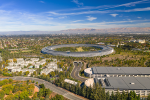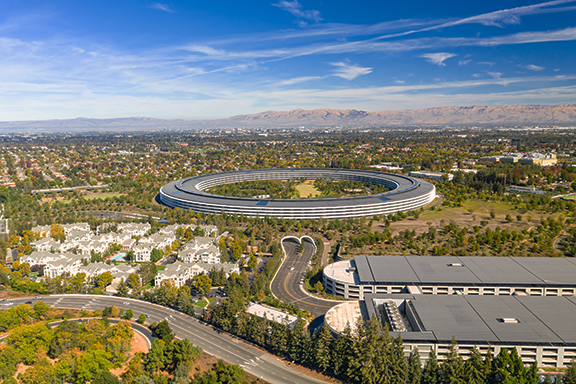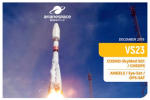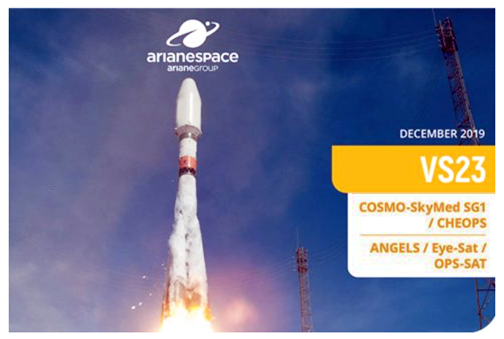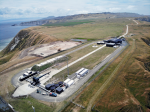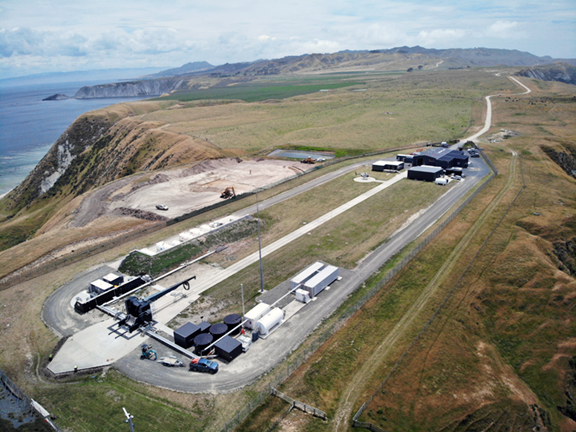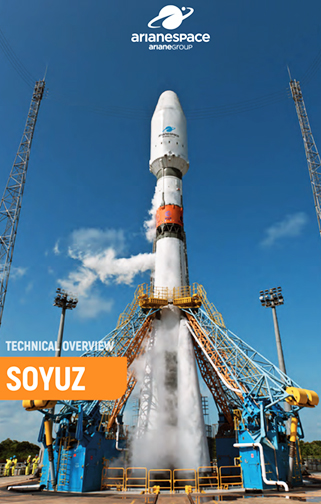 Arianespace
Arianespace successfully launched five satellites on the company’s year-ending Soyuz mission — departing at the exact planned liftoff moment of 5:54:20 a.m., local time.
The Soyuz ST-A launcher version flew a four-hour-plus profile to release its multi-satellite payload into SSO – starting with primary passenger COSMO-SkyMed Second Generation, then CHEOPS (Characterizing Exoplanet Satellite) and three auxiliary payloads: EyeSat, OPS-SAT and ANGELS.
This morning launch marked the Russian-built vehicle’s 23rd liftoff from the Spaceport in French Guiana and the 49th Soyuz mission overall for Arianespace (including 26 originating from Baikonur Cosmodrome in Kazakhstan, performed by the company’s Starsem affiliate). It provided an estimated total lift performance of 3,250 kg., including the satellites and ASAP-S multi-passenger dispenser system.
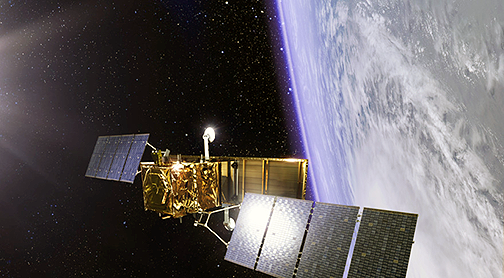
Artistic rendition of one of two, second-generation Cosmo-SkyMed radar reconnaissance satellites.
Image is courtesy of Thales Alenia Space.
COSMO-SkyMed 2Gen
To be used for Earth Observation (EO), COSMO-SkyMed Second Generation is the fourth satellite launched by Arianespace for the Italian Space Agency (ISA) and Ministry of Defence. The satellite was produced by Thales Alenia Space based on the manufacturer’s PRISMA platform and will deliver global coverage with a 16-day repeat cycle.
The full system of COSMO-SkyMed Second Generation satellites – developed to address the requirements of both commercial and government customers, as well as the scientific community – is designed to set new performance standards for space-based radar observation systems in terms of precision, image quality and the flexibility of user services.
COSMO-SkyMed Second Generation satellites, including the primary passenger orbited on this mission success with Soyuz, are equipped with synthetic aperture radars (SAR), allowing them to make observations under any weather or light conditions, both day and night.
This second-generation system, including its ground segment, will set a new performance standard for space-based radar observation systems in terms of precision, image quality and the flexibility of user services. It is a dual (civil/military) system, designed to address the requirements of both commercial and government customers, as well as the scientific community.
COSMO-SkyMed Second Generation will be the 162nd satellite manufactured by this constructor to be launched by Arianespace. There currently are five Thales Alenia Space’s satellites in Arianespace’s backlog.
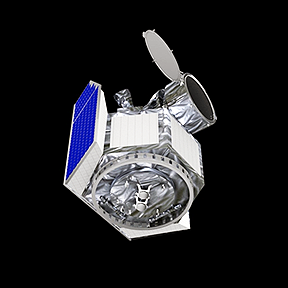
An artistic rendition of the CHEOPS satellite.
Image is courtesy of ESA.
CHEOPS
Produced by Airbus, the Characterizing Exoplanet Satellite (CHEOPS) will be used by the European Space Agency (ESA) on a mission to study bright, nearby stars that already are known to host exoplanets, in order to make high-precision observations of the planet’s size. It is the 74th satellite launched by Arianespace at the service of ESA.
CHEOPS will focus on planets in the super-Earth to Neptune size range, with its data enabling the bulk density of the planets to be derived – a first characterization step towards understanding these alien worlds.
This is an ESA mission implemented in partnership — in particular — with Switzerland. This 74th satellite to be launched by Arianespace for ESA will mark the 52nd mission conducted by the launch services provider at the service of this space agency.
The spacecraft will focus on planets in the super-Earth to Neptune size range, with its data enabling the bulk density of the planets to be derived – a first characterization step towards understanding these alien worlds.
This is the 25th scientific mission (and the 32nd satellite) to be launched by Arianespace.
Airbus in Spain is prime contractor for the mission, with the University of Bern being responsible for the telescope. Airbus led a consortium of 24 companies (seven From Spain) representing 11 European countries. The spacecraft was built in two years.
CHEOPS is the 128th Airbus satellite to be launched by Arianespace and there are currently 21 Airbus satellites in Arianespace’s backlog.
Smallsat Passengers
The three auxiliary passengers on this Soyuz mission, designated Flight VS23 in Arianespace’s numbering system, were orbited for the benefit of European institutions.
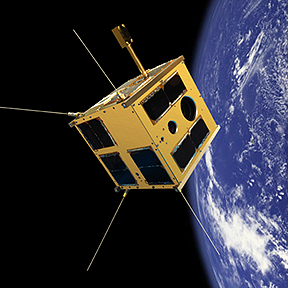
OPS-SAT
OPS-SAT
OPS-SAT is the world’s first free-for-use, on-orbit testbed for new software, applications and techniques in satellite control and brings Europe forward to a new era of space flight innovation and commercial opportunity. Its launch was performed for Tyvak Nano-Satellite Systems on behalf of ESA.
This a 3U CubeSat and the first satellite to be launched by Arianespace for Tyvak on behalf of ESA. Tyvak International of Italy provided the deployer and launch service for OPS-SAT on behalf of ESA. During the satellite’s first year of operation, OPS-SAT will host more than 100 in-flight experiments submitted from many ESA Member States. OPS-SAT was developed by the Graz University of Technology with subcontractors from Austria, Germany, Poland and Denmark. It will be operated by ESA from the European Space Operations Center (ESOC) in Germany.
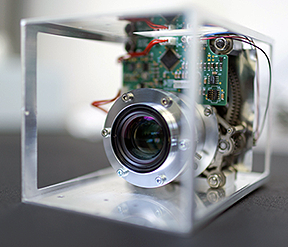
EyeSat
EyeSat
EyeSat, a cubesat designed to study zodiacal light and image the Milky Way, is being financed and developed by the French CNES space agency within the scope of the Janus project, which is designed to encourage students in universities and engineering schools to develop their own very small satellites.
Jointly financed and developed by CNES and Hemeria, ANGELS (for: Argos Néo on a Generic Economical and Light Satellite) is the first smallsat produced by French industry and will collect and determine the position of low-power signals and messages sent by the 20,000 ARGOS beacons now in service worldwide. The satellite is fitted with an instrument called IRIS, which is a small space telescope.
EyeSat will be the 16th satellite (including Pleiades satellites) to be launched by Arianespace for CNES. There is one additional CNES satellite to be launched in the Arianespace’s backlog: TARANIS.
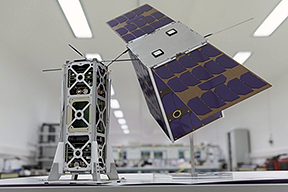
The ANGELS smallsat.
ANGELS
Argos Néo on a Generic Economical and Light Satellite (ANGELS) is jointly financed and developed by the French CNES space agency (Centre National d’Etudes Spatiales) and Hemeria – an innovative industrial group active in the aerospace, defense, energy, rail and automotive markets (which is an affiliate of Nexeya).
ANGELS is a 12U CubeSat, and is the French industry’s first smallsat. The satellite will be fitted with a miniaturized ARGOS Néo instrument, which is 10-times smaller than the equivalent previous-generation device. The instrument collects and determines the position of low-power signals and messages sent by the 20,000 ARGOS beacons now in service worldwide.
There are two project teams – CNES and Hemeria for ANGELS; and CNES, Thales Alenia Space and Syrlinks for ARGOS Néo – and they worked together on this French space project. ANGELS is paving the way for French industry to build operational smallsats within the “new space” environment.
ANGELS will be the 17th satellite (including Pleiades satellites) to be launched by Arianespace for CNES.
Flight VS23 was Arianespace’s third launch in 2019 using a medium-lift Soyuz, and the ninth overall this year across its full family of launchers – which also includes the heavy-lift Ariane 5 and lightweight Vega.
Arianespace CEO Stéphane Israël, who provided his post-flight comments from the Spaceport’s mission control center, said for the company’s ninth and last launch of the year, success is here for Arianespace’s customers and partners. This success shows Arianespace’s ability to deliver for European institutions and to orbit innovative small satellites.







